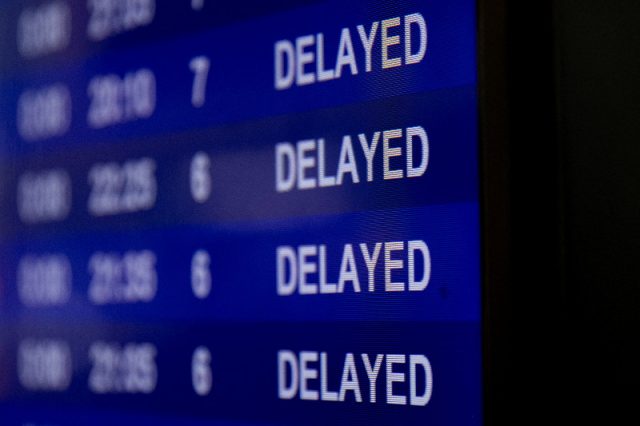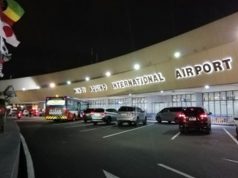
Many Filipinos online were confused over the different agencies that handle flights in and out of Manila following the airspace glitch on Sunday, New Year’s Day.
Thousands of flights were diverted, canceled and delayed on January 1 after the country’s air navigation system malfunctioned, thus causing inconvenience to thousands of passengers.
RELATED: ‘We’d be happy to participate’: Tycoon Pangilinan offers help after NAIA crisis
Several travelers took to social media to air their grievances about the perceived poor response and handling of the situation.
“No contingency plans, they didn’t send extra staff to assist the stranded, no system to manage crowd, to help passengers to rebook and get the earliest flights!” one user commented.
Amid these comments, some Filipinos on social media also expressed confusion about the agencies and terms thrown in advisories of the fiasco.
Moreover, others also asked if other airports were affected by the technical glitch.
“Why not use Clark Airport para di matambak ang flights?” one user commented.
“Why can’t other international airports, like Clark, handle the affected flights from NAIA? Is this a matter of insufficient infrastructure in other airports?” another user asked.
The Department of Transportation advised the full restoration of equipment later that night.
Transport Secretary Jaime Bautista also noted that the power went down at the Air Traffic Management Center (ATMC) of the Civil Aviation Authority of the Philippines (CAAP) at 9:45 a.m. local time.
“At around 9:49 a.m. local time, the Air Traffic Management Center (ATMC) which serves as the facility for controlling and overseeing all inbound and outbound flights and overflights within the Philippine airspace, went down due to a power outage, resulting in loss of communication, radio, radar, and internet,” Bautista said in a briefing.
The ATMC partially went back up at 4 p.m. and then, normal operations resumed at 5:50 p.m.
Equipment restoration, however, was still ongoing by then.
The Philippine airspace
In technical terms, the Philippine airspace is identified as its flight information region (FIR).
FIRs are “administrative divisions of airspace over a country or city.”
“The body administering each FIR is responsible for providing flight information and alert services to aircraft flying in the FIR,” said the think tank Asia Maritime Transparency Initiative.
To provide a glimpse of the crisis, air traffic tracker Flight Radar 24 posted images of several flights being diverted around Manila’s FIR on New Year’s morning to technical issues on the ground.
By 12 p.m., it posted another image that showed no airborne flights around the Philippines.
There are currently no airborne commercial flights in the Philippines (MANILA FIR). pic.twitter.com/xUhyPJarmE
— Flightradar24 (@flightradar24) January 1, 2023
The Civil Aviation Authority of the Philippines
The government body that administers the country’s airspace or FIR is CAAP.
CAAP was created by virtue of Republic Act 9497 or the Civil Aviation Authority Act of 2008.
On its website, it was stated that the regulatory body is mandated to “establish and prescribe the corresponding rules and regulations for the enforcement of laws governing air transportation.”
It shall also “operate and maintain national airports, air navigation and other similar facilities in compliance to ICAO (International Civil Aviation Organization).”
CAAP thus covers all air traffic and air navigation services in the country.
- Air traffic services – provide the “air traffic, air space management, air traffic flow management, flight information service/aeronautical information service and alerting services consistent with domestic, regional and global requirements”
- Air navigation services – establish air navigation facilities across the country and conducts their inspection and evaluation.
The new Air Traffic Management Center was inaugurated in January 2018.
Back then, the DOTr said these new facilities shall cover 100% of Philippine airspace.
GOOD NEWS: Additional Communications, Navigation, Surveillance Air Traffic Management (CNS/ATM) Systems will be inaugurated later by Pres. Duterte together w/ DOTr Sec. Tugade. This will now cover 100% of PH airspace for safer and more secured flights. #DOTrPH 👊🏻🇵🇭 pic.twitter.com/mUQfezp9fs
— DOTrPH 🇵🇭 (@DOTrPH) January 16, 2018
ABS-CBN reporter Jacque Manabat also pointed this out on Twitter in her report about the air traffic outage.
This air navigation system is under CAAP not NAIA. The system tracks specific flights that pass through the PH air space, not limited to NAIA.
It sends satellite signals to aircraft transponders by using transponder transmissions to determine the precise locations of aircrafts. https://t.co/e3UK1yp4sM
— Jacque Manabat (@jacquemanabat) January 1, 2023
Manila International Airport Authority
The MIAA is the operator of the Ninoy Aquino International Airport, the country’s premier gateway.
NAIA is also the main facility where most flights were disrupted due to the “technical issues” last Sunday.
Different entities, therefore, handle the operations of other international airports outside of Metro Manila.
Department of Transportation
DOTr oversees all transportation sectors in the country, including aviation.
CAAP and MIAA are among the attached agencies of the department responsible for the Philippine aviation industry and air travel.









